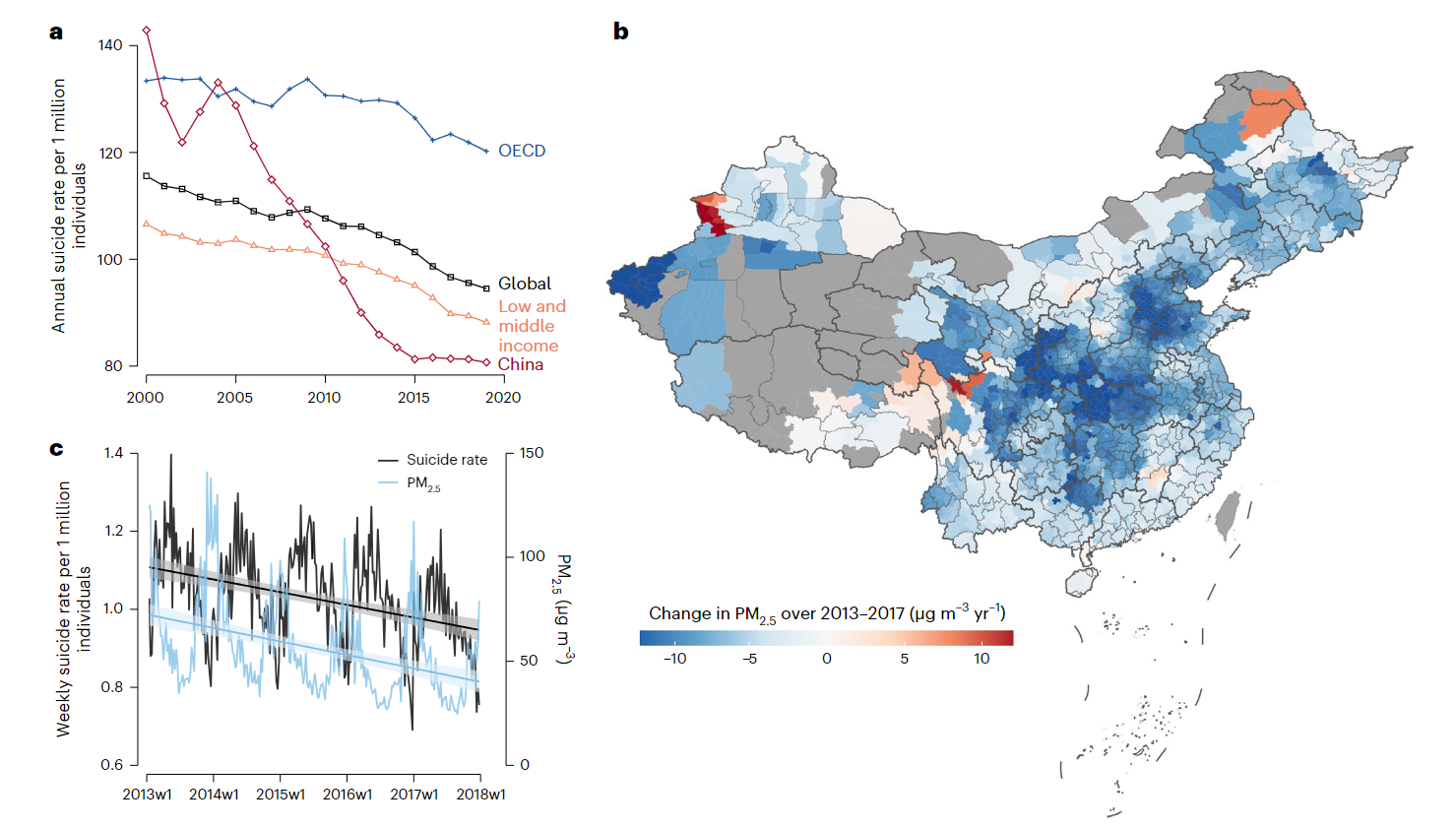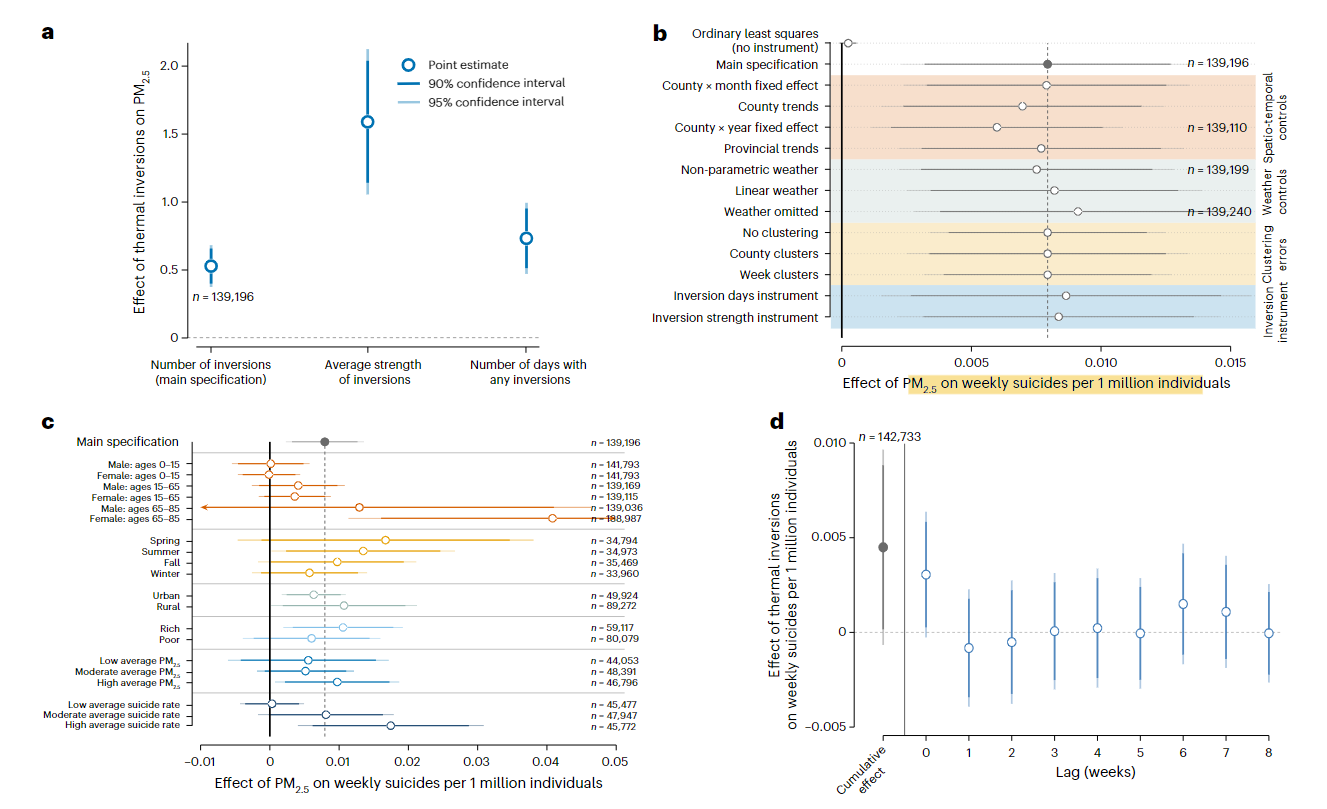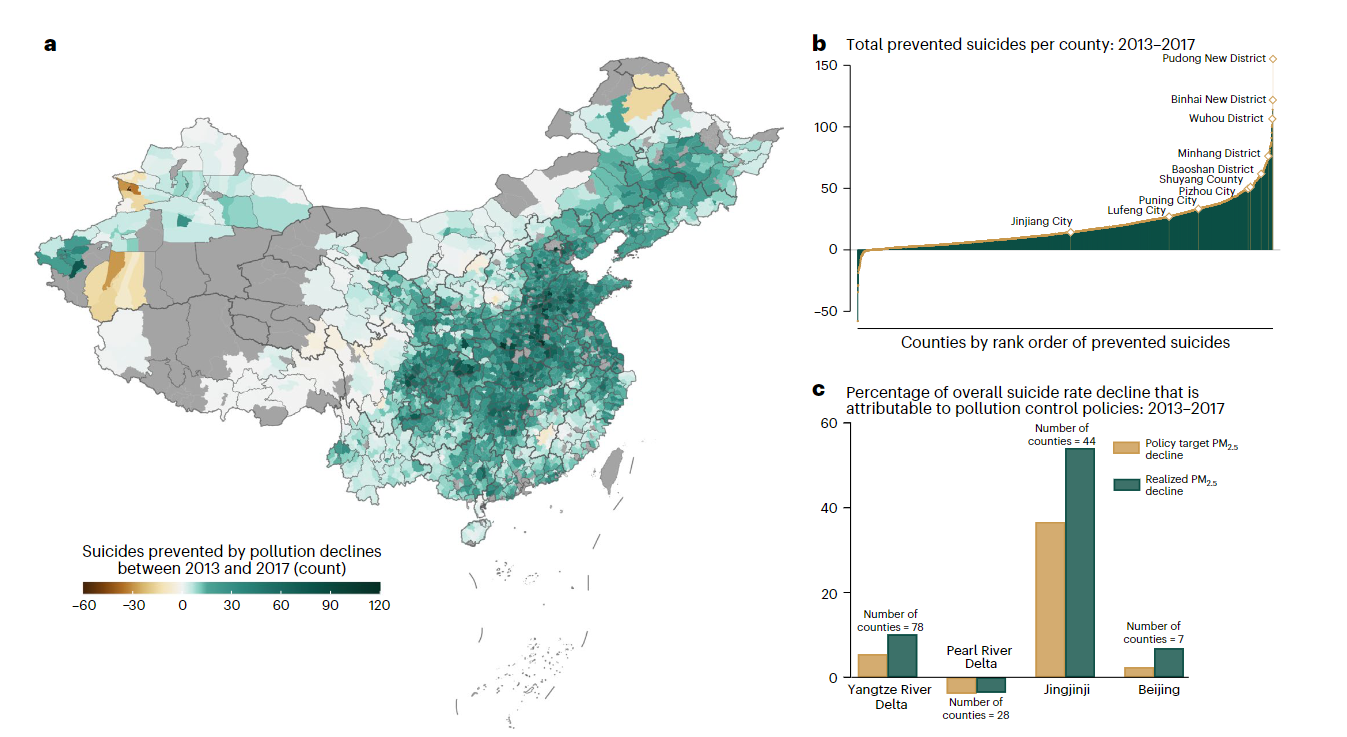Zhang, P., Carleton, T., Lin, L. et al. Estimating the role of air quality improvements in the decline of suicide rates in China. Nat Sustain 7, 260–269 (2024)
Objective:
- Whether improvements in air quality may contribute to reductions in suicide rates
Case:
- China counties
Methodology:
- 2SLS
- Kleibergen-paap F-statistics of the first stage regression is 41.84
- IV
- two-sided t-test statistic of t = 2.75 and p = 0.006
- Robust:
- Replace variables
Data Source: Open
- PM 2.5: China National Environmental Monitoring Center
- Thermal inversion: Modern-Era Retrospective Analysis for Research and Application
- Suicide: Chineses Center for Disease Control and Prevention
- Population: yearbook
- Global national suicide: world health organization
Findings:
- One additional inversion per week raises weekly county-level PM2.5 by 0.51 $\mu$ g $m^{-3}$

- The importance of propagation through global supply chains-even countries that are not directly affected by the virus experience large losses, and low- and middle-income countries are more vulnerable to indirect effects

- Using thermal inversions as an instrumental variable for PM 2.5, 1 s.t. increase PM 2.5 causes an increase in weekly suiside rates of 0.24 per 1 million individuals (25%)

- The suicide rate in people aged 65-85 are far more sensitive to PM 2.5 than in other groups
- The suicide rate for women aged 65-85 increased by 0.04
-
No evidence proves displays the relationship between income and suicide
- Suicide rates respond very quickly to climate conditions that increase PM 2.5; weekly suiside rates rise with contemporaneous thermal inversions, which raise PM 2.5
- PM 2.5 improvements policy across China in 2013-17 prevented 45970 suicides
